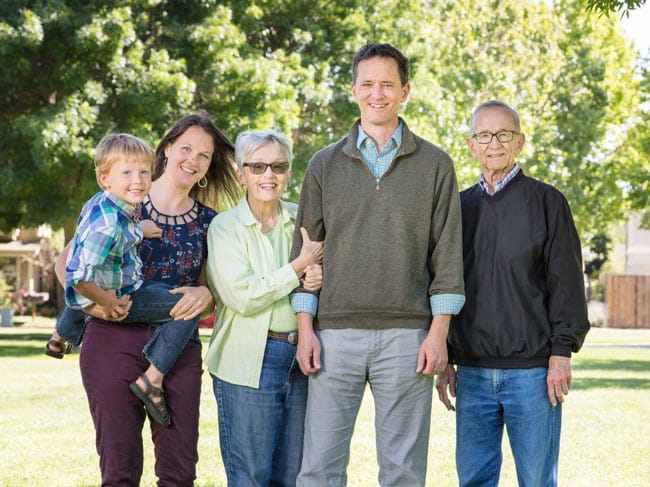Estate Planning & Trusts
Estate planning in California is centered around TRUSTS. But what IS a trust? A TRUST is an AGREEMENT between a SETTLOR and a TRUSTEE for the benefit of a BENEFICIARY.
There are many different TYPES of trusts. Here are the trusts we most commonly find in estate planning:
This is a protective trust for just about anyone. Like the SNT, this type of trust is irrevocable, and it can be set up as a stand-alone trust (while settlor is alive) or a testamentary trust (created from revocable trust upon settlor’s death). Typically the settlor is the parent of the beneficiary, and the beneficiary or a third party can act as trustee. Once funded, the trustee needs to obtain a tax ID number and file yearly income taxes.
This type of trust provides 3 major benefits:
- All assets held in the lifetime trust are not considered part of the beneficiary’s “estate” so they remain with the beneficiary if he or she endures a divorce – it’s like doing a prenup or postnup for your loved one.
- There is a high level of creditor protection for assets held in a lifetime trust, as long as the beneficiary is not acting as trustee of the trust
- When the beneficiary dies, assets held in the trust pass to the beneficiary’s children free of estate taxes. Because of this, these types of trusts are also called “GST” (or Generation-Skipping Transfer) Trusts.Unfortunately, you cannot set up a lifetime trust for yourself or your spouse in California – it is more difficult to do this type of planning (called “asset protection planning”) in California. If interested, you can set up a Dynasty Trust in another state that offers more relaxed laws on asset protection, such as Nevada, Alaska or Delaware
This is a protective trust for a disabled person. A SNT should be irrevocable, and can be set up while the settlor is alive (a “stand-alone SNT”) or it springs into being upon the settlor’s death, from the revocable living trust (a “testamentary SNT”). The settlor and initial trustee is typically the parent or other family member, and the beneficiary is the disabled person.
The main purpose of a SNT is to protect needs-based public benefits for the disabled beneficiary. All of the assets held in the trust are for the benefit of the beneficiary, but the beneficiary cannot change the trust or act as trustee. Because someone else besides the beneficiary has control over the trust assets, the assets in the trust are not considered the beneficiary’s countable assets for public benefits purposes, and the beneficiary can continue to qualify for benefits such as SSI and Medicaid (Medi-Cal in California).
A stand-alone SNT is usually set up with a minimum amount in it, say $10. This is called a “seed trust”. Once the trust is “funded”, that is, substantial assets are transferred into the trust, the trustee needs to get a tax ID number and start filing fiduciary income tax returns.
This is the cornerstone of most estate plans in California. This type of trust can be changed or amended at any time (it’s “revocable”) and it’s set up while the settlor is still alive (it’s “living”). Typically, the people setting up a revocable living trust play all 3 roles: they are the settlors, the trustees, and the beneficiaries!
The main purpose of an RLT is to avoid probate. Assets held in an RLT pass upon the settlor’s death as described in the trust, and the named successor trustee takes over management of the trust. Thus, the assets in the trust don’t need to go through the probate court process. The RLT is also good for management, particularly if the settlor isn’t able to act as trustee – it is relatively easy for the named successor trustee to take over management of the assets held in the trust.
This type of trust is also the simplest type of trust out there. Because the trust is revocable, and the same person is acting as settlor and trustee, you don’t need to get a separate tax ID number or file income taxes – the settlor’s social security number is used to report any income generated in the RLT
Grateful for Ellen’s expertise with trusts
“We can’t speak more highly of Ellen’s expertise with trusts. Several years ago our financial planner suggested that we look into dynastic trusts because of changing tax laws. We also have a special needs granddaughter on the autistic spectrum. Ellen crafted a trust that not only provides for our heirs but has special needs provisions to protect and provide for our granddaughter. Ellen really understands special needs children because she’s part of that community. Jan: We are so grateful to Ellen for how she takes care of us.”
– Dave & Jan Banks

Parenting When You’re Gone
Some families with complex situations or children who will need a lot of guidance need an estate plan to provide financial management, care and structure. As the experts with these types of involved estate plans, we have developed an estate planning guide to walk you through each step.
